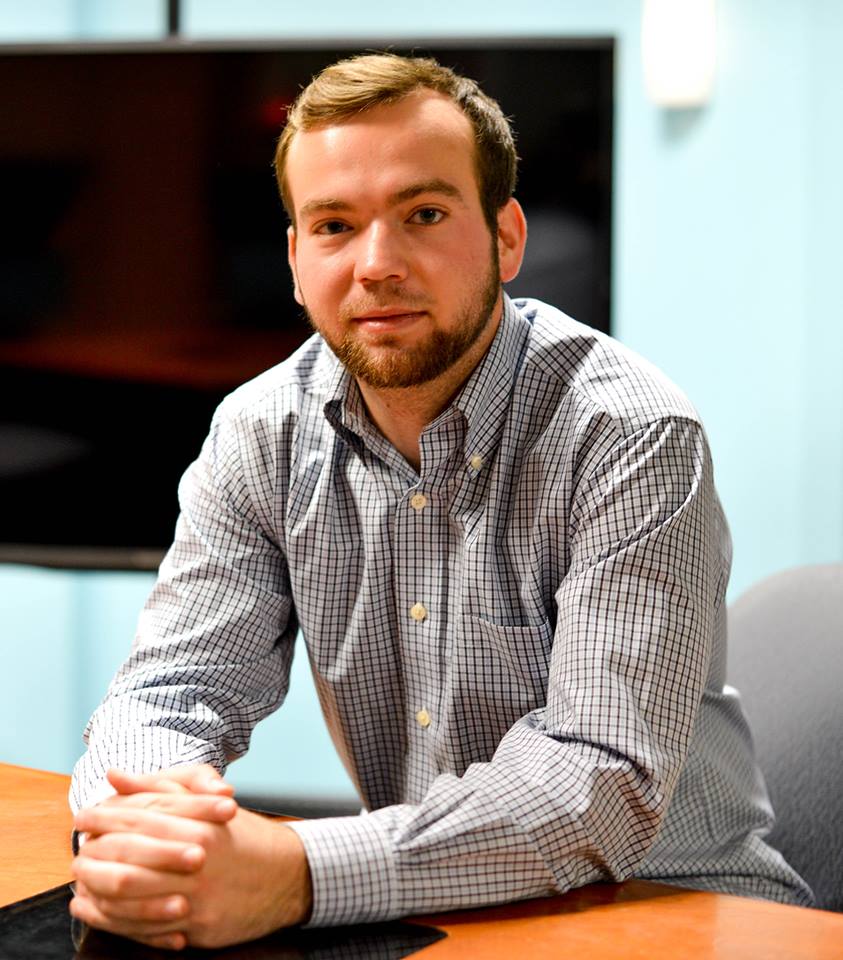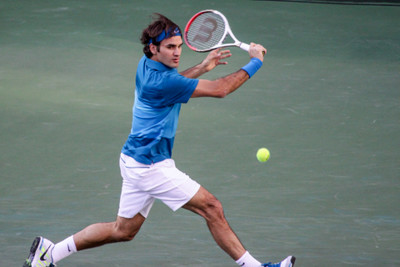

On Aug. 20, 2009, it was just another day for the 7 billion people who inhabit this Earth.
But for a 15-year-old from Columbus, Ohio, it was a day that would never be forgotten.
The summer was drawing to an end, and the Chipps family decided to take a a two-hour drive down Interstate 71 to watch our family sport (tennis) firsthand and enjoy the best thing money can buy: a $40 day-pass at the Western & Southern Financial Open outside of Cincinnati, Ohio.
The slate was knee-deep that day with tons of high-ranking players who were either playing or practicing around the complex, but my sports-crazed mind didn’t care about Andy Roddick or the Bryan brothers practicing 10 feet away from me.
I was there to see my hero, Roger Federer, and witness a moment in time that would live inside of me forever.
It had been six years since Roger Federer had won his first Grand Slam title at Wimbledon, and by this point, his greatness had already been sealed.
A few weeks earlier, Federer defeated Roddick at Wimbledon in an epic five-set final for his 15th Grand Slam and moved past Pete Sampras for first place on the all-time Grand Slam list. And earlier that May, Federer finally won his first and only French Open to claim the career Grand Slam.
So as the young Isaac Chipps walked inside the gates and took his seat in the top right corner of the stadium to see for himself the beauty, elegance and greatness of Federer in the flesh, it was so much more than numbers and strategy. At the time I didn’t understand this, but what I was about to witness was something David Foster Wallace once called a “religious experience.”
After 15 minutes of endless anticipation, Federer walked onto the court with the same casual but confident look I’d seen on TV so many times before. He was wearing his classic Nike headband, and his hair was flowing as he flung his long and powerful one-handed backhand across the court.
Federer’s opponent that day was David Ferrer, a feisty Spaniard who’s currently the No. 8 player in the world.
After a sloppy first set, the 17-time Grand Slam champion would regain his form and beat Ferrer, 3-6, 6-3, 6-4, and Federer would eventually go on to win the tournament for the third time in his career.
It was anything but a good match for Federer, but I didn’t care. What translated from Center Court to my brain was a tennis crescendo that was unlike anything I’d ever experienced before. It was my hero and I together at the same place at the same time and nothing could get in the way of that.
I cheered and screamed over my love of tennis while watching Federer display the masterpiece that Wallace had described and the brilliance that commentators like Chris Fowler had always attempted to put into perspective. It was just another match and another day for the greatest of all-time, but it was a moment in time that I cling onto so tightly, because Federer is one of the few things that allows me to spend time with the kid inside of me.
As you grow and mature, you learn to appreciate time, and how little of it you really have. Time is something we all fight for because as we quickly learn, it always eludes us.
As discussed in this excellent Grantland piece, it appears as though Federer has figured out how to maximize and appreciate the value of time.
At 34, Federer is currently the No. 2 player in the world and was within arm’s reach of Wimbledon and U.S. Open titles this year.
Let me put that into context for you, because to be 34 and still at the top of the tennis world, isn’t just remarkable, it’s unheard of.
In tennis years, 34 isn’t when you get your AARP card or start collecting your Social Security benefits. It’s when they bury you six feet deep and start writing your obituary.
At 34, Andre Agassi was seeing his chiropractor more often than his tennis racket. At 34, John McEnroe was sitting on his couch writing apology letters to all the umpires he berated. And at 34, Bjorn Borg had been eight years deep into his retirement and was an afterthought to the tennis world.
But Federer, amidst the tennis stigma that anyone over 27 can’t play at an elite level, continues to move forward and maximize his time.
I’m pretty much an adult now in every sense of the word, so time is something I’ve learned to appreciate because I often wake up wondering where it went. And the moments when I would live and die and cry and scream for the joy of sports are almost all memories of the past. But in those scattered moments when Federer connects with my eyes, the 15-year-old inside me comes pouring out. And when he does, I cherish it, because it’s time.
As I was watching Federer battle with Novak Djokovic two weeks ago during the U.S. Open Final, I felt my 15-year-old self jumping through my skin and into the peripheral space surrounding me. It wasn’t just another match between two superior athletes fighting for tennis supremacy. I was living in a timeless moment with my hero. I was living and dying with every point Federer saved because that’s what bridges the gap between my 15-year-old self and the person I see in the mirror today.
After a promising second-set win, Federer was unable to stop Djokovic — who was seemingly perfect throughout the entire tournament — and lost to the Serbian in four sets.
It was disappointing, but it was time, and so I was grateful.
As Federer was presented with his runner-up trophy, I was scared that just maybe he might announce to the world that his time is up. But before he walked off the court, he baited the crowd.
“One last thing, I’ll see you guys next year.”
And so for another year, the 15-year-old who witnessed a religious experience on Aug. 20, 2009, lives on.
And so for another year, I am blessed with the thing I crave most — time.